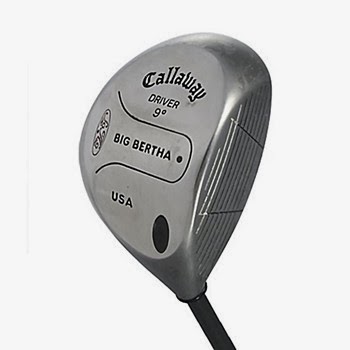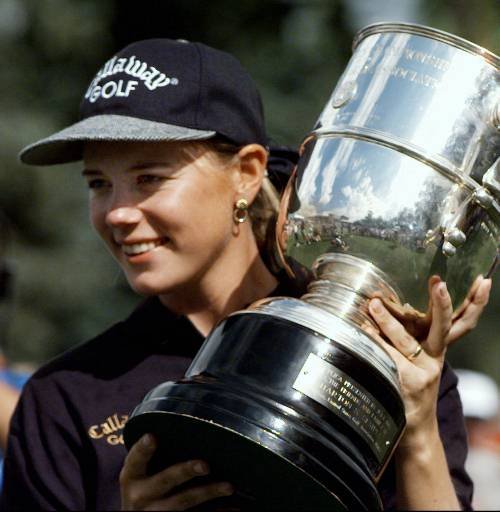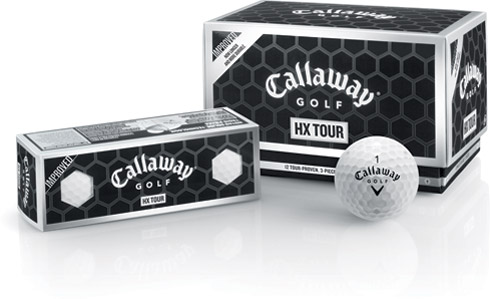If all of our golf ball inventory could be placed into a big golf bag, shaken up and emptied, a Titleist or a Nike might roll out like a white marble—or maybe a Callaway, a popular brand for golf gear, would zoom out ahead of the crowd as the company has done in the last few decades.
Today, we celebrate Callaway golf balls for their velocity, courtesy of aerodynamics, but some golfers might not be quite up to speed with their history and ingenuity.
A former textile magnate and cousin to Bobby Jones, Ely Callaway Jr. was an avid golfer that played with clubs from the Hickory Sticks company. In 1982, shortly after the sale of Callaway Vineyards to Hiram Walker & Sons for a profit of $9 million, the owners of Hickory Sticks approached Callaway for investment to keep their company afloat. On par with them, he purchased half of the company and renamed it Callaway Hickory Stick USA. Just two years later, he bought the remainder for $400,000, and moved the headquarters to Carlsbad, California where it was renamed Callaway Golf Company.
 The company quickly proved it was not a miniature golf ball manufacturer as its pioneer presence in the golf industry grew. In 1986, Callaway became the first company to use computer-controlled milling machines to ensure uniform flatness on the surface of its putters. A few years later, it introduced S2H2 Iron technology, and soon thereafter the 190cc Big Bertha Driver.
The company quickly proved it was not a miniature golf ball manufacturer as its pioneer presence in the golf industry grew. In 1986, Callaway became the first company to use computer-controlled milling machines to ensure uniform flatness on the surface of its putters. A few years later, it introduced S2H2 Iron technology, and soon thereafter the 190cc Big Bertha Driver.
For golfers all around, professional and amateur, Callaway products became tricks up their sleeves. In 1991, Mark Brooks won the Greater Greensboro Open and the Greater Milwaukee Open with the Callaway driver, like a magician’s wand in his black bag. The Callaway Golf Company (NYSE: ELY) went financially public in 1992, and by the end of the season, the Big Bertha Driver was #1 on the Senior PGA, LPGA, and Hogan Tours. The next year, the Big Bertha Heavenwood made its debut while Annika Sorenstam joined the Callaway Golf Company as a staff professional. Only a couple years later, she won the U.S. Women’s Open as her first LPGA Tour victory (her second would come in 1996). The Callaway Golf Company was quickly becoming the #1 manufacturer of woods and irons.
 Growth accelerated in the next decade. In 1997, Callaway Golf acquired Odyssey Sports, Inc., and sales soared like an eagle to $848 million, more than triple that of the nearest competitor. The ERC II Forged Driver became the highest COR (Coefficient of Restitution) driver ever produced, and the Rule 35 Blue and Rule 35 Red golf balls were released, in 2000. In 2001, the Odyssey 2-Ball Putter was introduced. That same year, Ely Callaway retired after a successful career as the president and CEO of the Callaway Golf Company.
Growth accelerated in the next decade. In 1997, Callaway Golf acquired Odyssey Sports, Inc., and sales soared like an eagle to $848 million, more than triple that of the nearest competitor. The ERC II Forged Driver became the highest COR (Coefficient of Restitution) driver ever produced, and the Rule 35 Blue and Rule 35 Red golf balls were released, in 2000. In 2001, the Odyssey 2-Ball Putter was introduced. That same year, Ely Callaway retired after a successful career as the president and CEO of the Callaway Golf Company.
 In 2002, Callaway pioneered the world of golf once again with the presentation of its HEX dimple pattern, which replaced round dimples, in its HX Golf Ball line. Phil Mickelson joined the Callaway Golf Company after shooting the magical number of 59 with a prototype HX Tour golf ball to end the 2004 season. Meanwhile, Arnold Palmer competed in his 50th consecutive (and final) Masters Tournament with a bagful of Callaway clubs. The next year, Phil Michelson won his second major, the PGA Championship at Baltusrol using the HX Tour 56 ball, and Michael Campbell won the U.S. Open using the HX Tour golf ball.
In 2002, Callaway pioneered the world of golf once again with the presentation of its HEX dimple pattern, which replaced round dimples, in its HX Golf Ball line. Phil Mickelson joined the Callaway Golf Company after shooting the magical number of 59 with a prototype HX Tour golf ball to end the 2004 season. Meanwhile, Arnold Palmer competed in his 50th consecutive (and final) Masters Tournament with a bagful of Callaway clubs. The next year, Phil Michelson won his second major, the PGA Championship at Baltusrol using the HX Tour 56 ball, and Michael Campbell won the U.S. Open using the HX Tour golf ball.
 In 2006, Callaway Golf began what would become a 6-year legal involvement when it sued the Acushnet Company (Titleist Golf) for patent infringements under the claim that the market-leading Titleist Pro V1 infringed on Spaulding Company patents (Top-Flite Golf), a previous purchase of Callaway Golf. In April of 2012, both companies compromised to allow each other to manufacture balls and club products under the other’s patents, without a monetary settlement owed by either party.
In 2006, Callaway Golf began what would become a 6-year legal involvement when it sued the Acushnet Company (Titleist Golf) for patent infringements under the claim that the market-leading Titleist Pro V1 infringed on Spaulding Company patents (Top-Flite Golf), a previous purchase of Callaway Golf. In April of 2012, both companies compromised to allow each other to manufacture balls and club products under the other’s patents, without a monetary settlement owed by either party.
We agree with Ely Callaway and his ambition to “deliver demonstrably superior, pleasingly different” products, which is why we deliver Callaway golf balls to you through the pleasingly different (to your wallet and the environment) process of recycling. We are the only used golf ball company to even offer the new 2014 line of Callaway golf balls, and they are all in stock right here.

